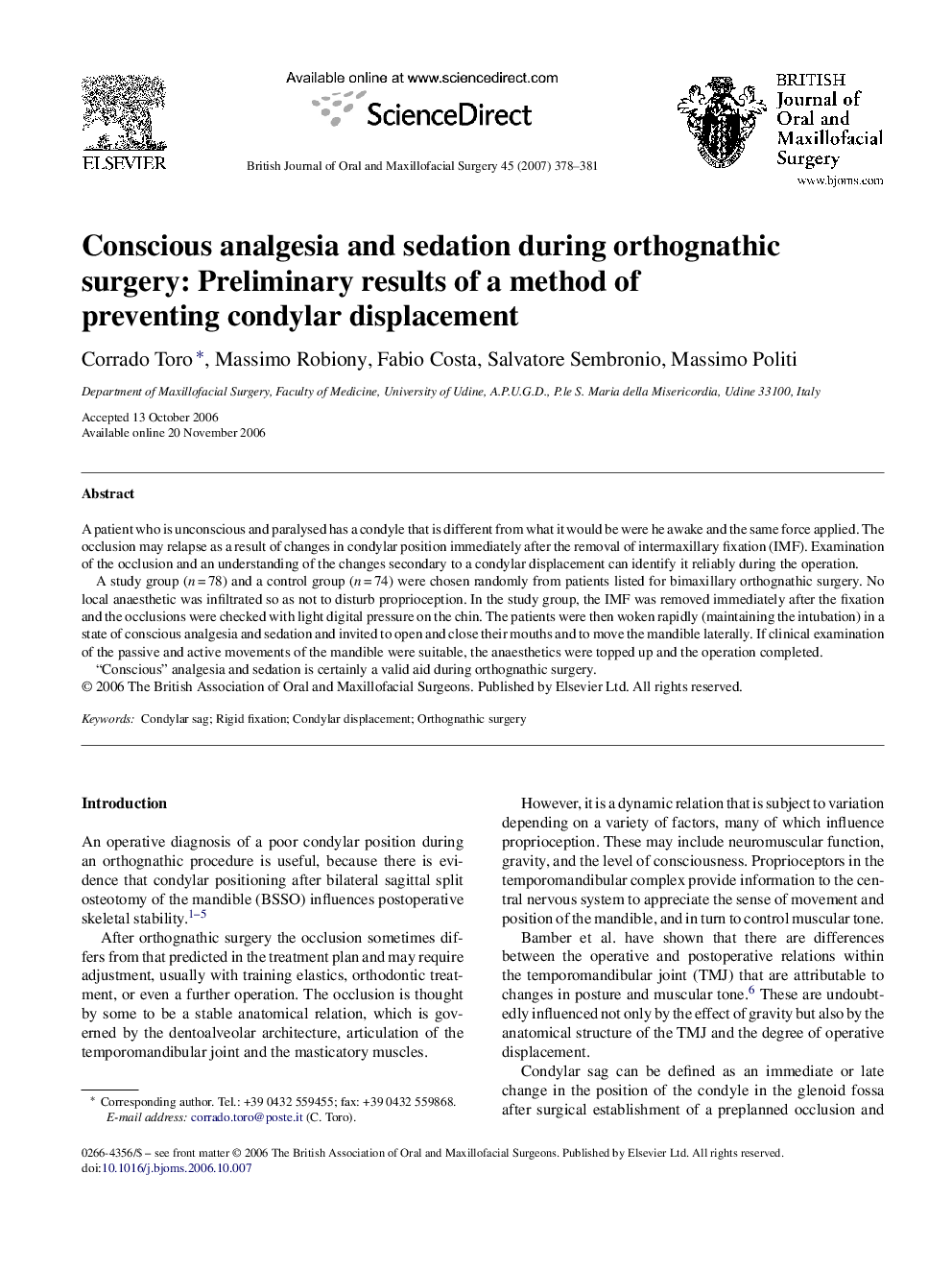| Article ID | Journal | Published Year | Pages | File Type |
|---|---|---|---|---|
| 3125633 | British Journal of Oral and Maxillofacial Surgery | 2007 | 4 Pages |
A patient who is unconscious and paralysed has a condyle that is different from what it would be were he awake and the same force applied. The occlusion may relapse as a result of changes in condylar position immediately after the removal of intermaxillary fixation (IMF). Examination of the occlusion and an understanding of the changes secondary to a condylar displacement can identify it reliably during the operation.A study group (n = 78) and a control group (n = 74) were chosen randomly from patients listed for bimaxillary orthognathic surgery. No local anaesthetic was infiltrated so as not to disturb proprioception. In the study group, the IMF was removed immediately after the fixation and the occlusions were checked with light digital pressure on the chin. The patients were then woken rapidly (maintaining the intubation) in a state of conscious analgesia and sedation and invited to open and close their mouths and to move the mandible laterally. If clinical examination of the passive and active movements of the mandible were suitable, the anaesthetics were topped up and the operation completed.“Conscious” analgesia and sedation is certainly a valid aid during orthognathic surgery.
